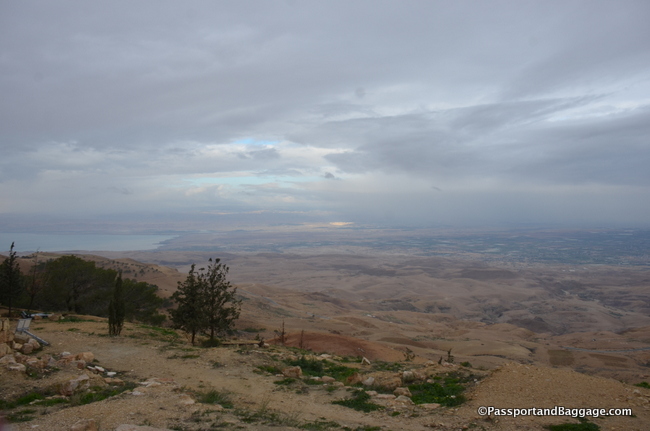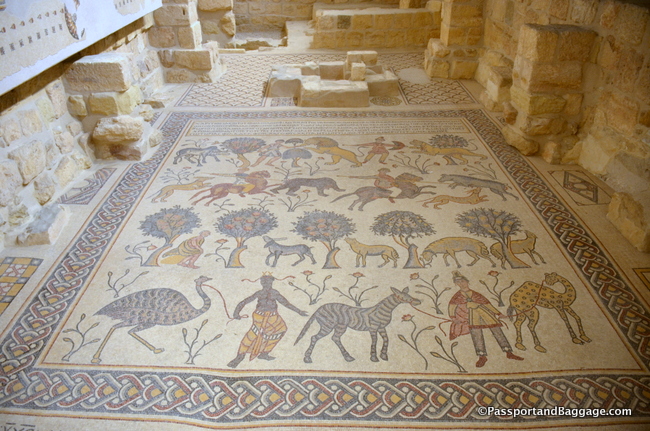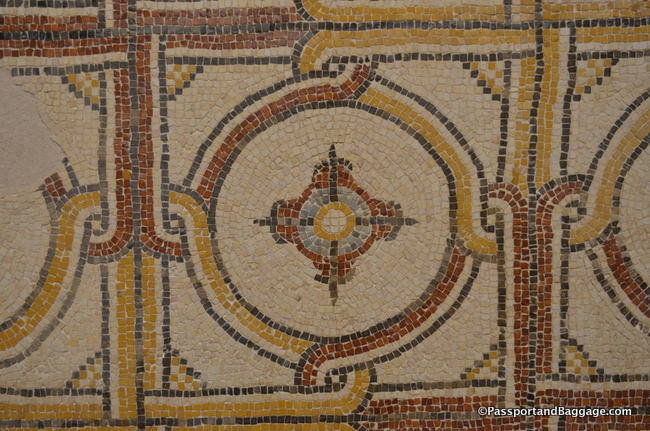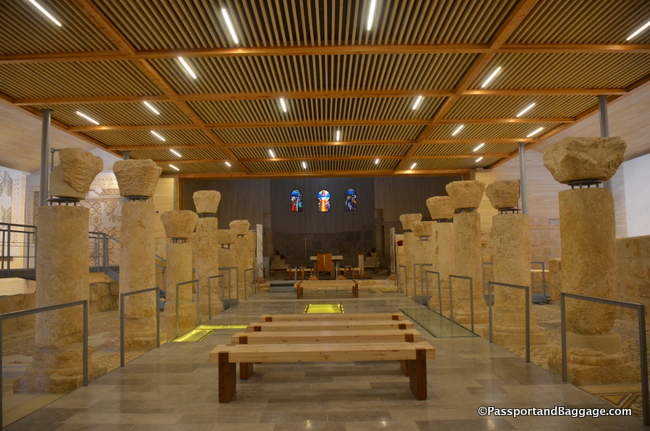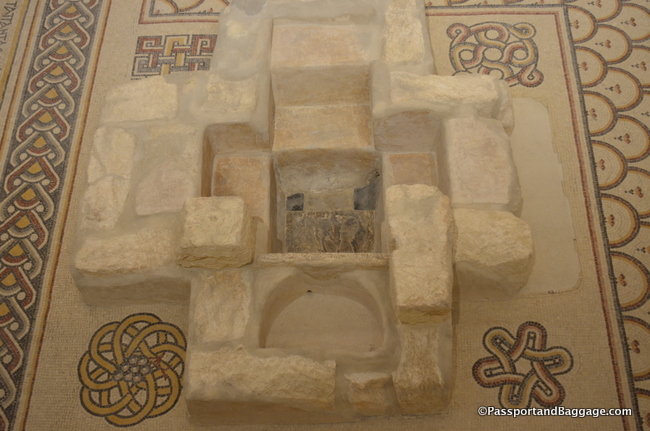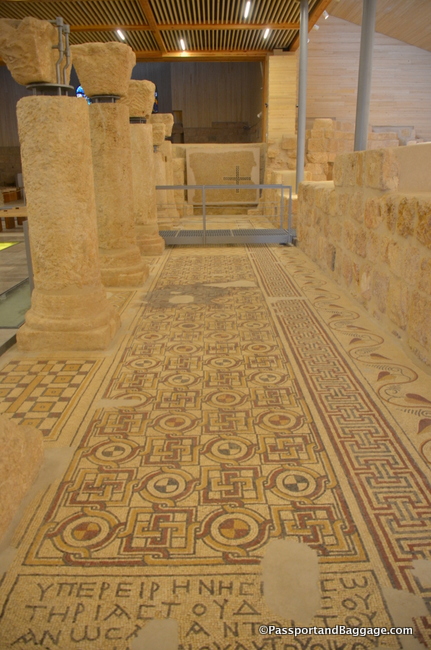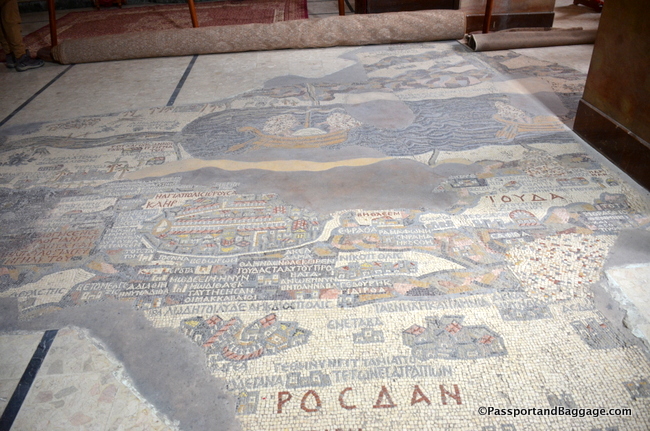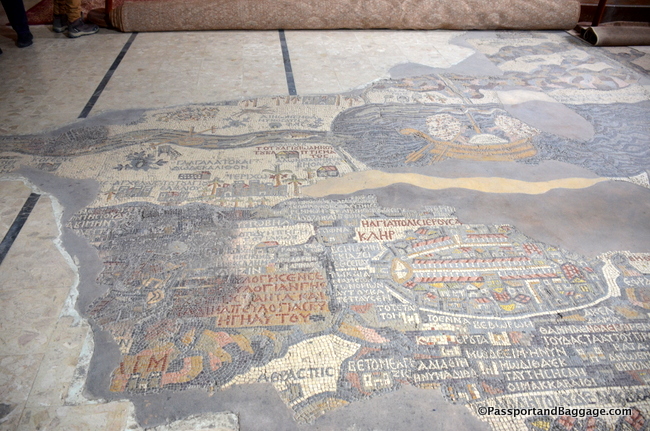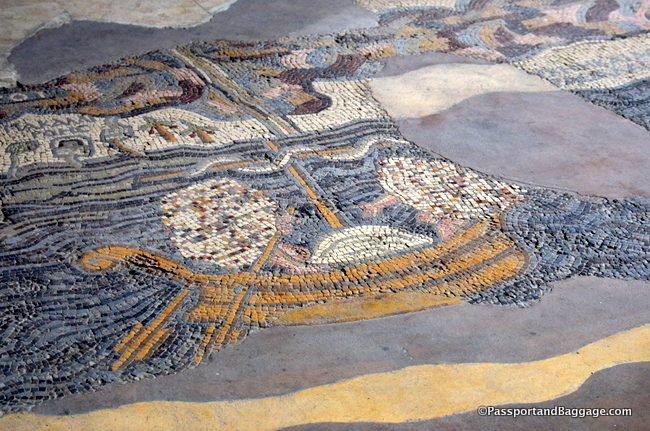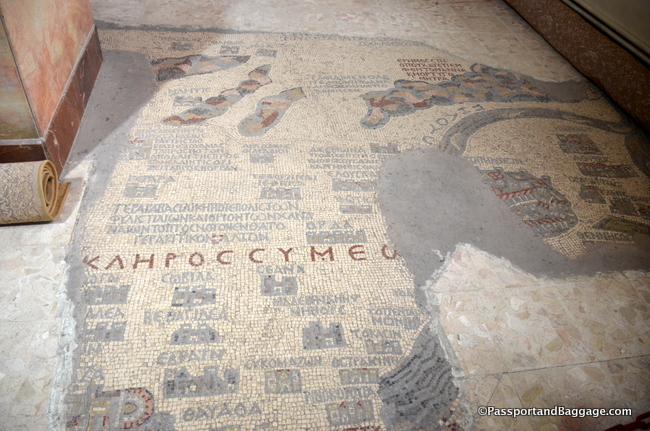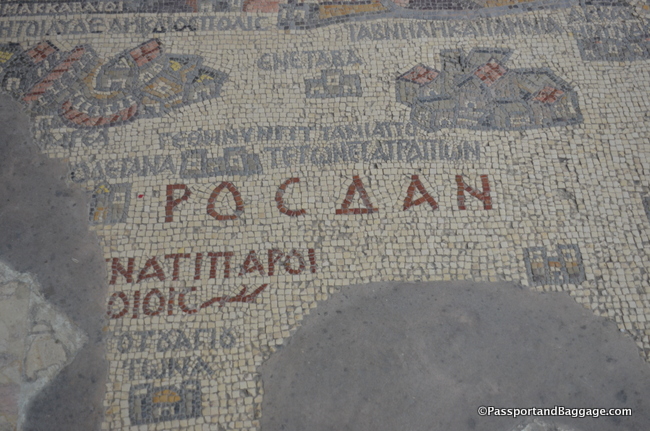Jordan
January 9, 2019
I am crazy about mosaic floors from the ancient times, so much so that I have a mosaic floor in my home. Today I got to see one of the oldest in the world. The history of mosaic goes back some 4,000 years, with the use of terracotta cones pushed point-first into a background to make a decoration. Beginning around 200 BCE, specially manufactured pieces (“tesserae”) were used to give extra detail and range of color to the work. Using small tesserae, sometimes only a few millimeters in size, meant that mosaics could imitate paintings. The expansion of the Roman Empire then took mosaics to the far ends of the empire.
Mount Nebo
Mount Nebo is mentioned in the Hebrew Bible as the place where Moses was granted a view of the Promised Land.
I have come to Mt Nebo, to view the mosaics in a 4th-century basilica. The church was radically renovated to hold the mosaics that date from around 530.
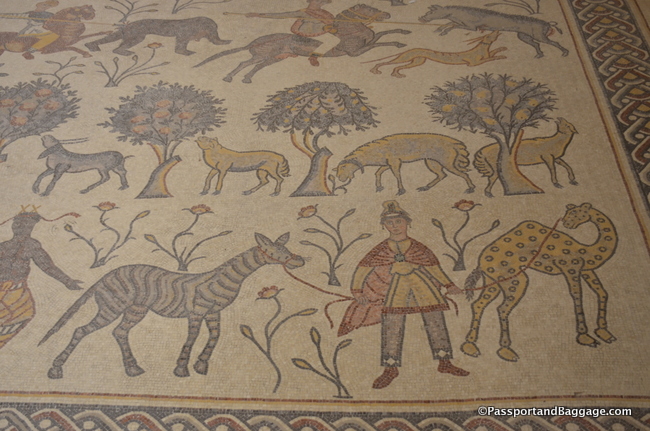 The most stunning is a hunting and herding scene interspersed with an assortment of African animals, including a zebu (humped ox), lions, tigers, bears, boars, zebras, an ostrich on a leash and a camel-shaped giraffe.
The most stunning is a hunting and herding scene interspersed with an assortment of African animals, including a zebu (humped ox), lions, tigers, bears, boars, zebras, an ostrich on a leash and a camel-shaped giraffe.
The church was abandoned by the 16th century and reconstructed in the 20th century, using 4th- and 5th-century pilgrim travelogues. The Franciscans bought the site in 1932 and were responsible for excavating most of the ruins of the church and the monastery, as well as reconstructing much of the basilica.
A sampling of some of the other mosaics in the basilica:
*
Church of Saint George
Madaba, Jordan
This mosaic map is the oldest known geographic floor mosaic in existence. It depicts the Middle East during the height of the Byzantine period (330-1453 CE). Created sometime during the late 6th century CE, much of the map’s tiles have been destroyed but a large contiguous piece of the map still exists illustrating city names and geographic information. The mosaic covers lands from Egypt to Lebanon, including sites such as Bethlehem and Gethsemane, but the heart of the mosaic is the detail of the city of Jerusalem. The Jerusalem portion of the map shows a number of specific structures and street in the city such as the Damascus Gate, the Church of The Holy Sepulcher, and the Tower of David.
More of the tile map:
